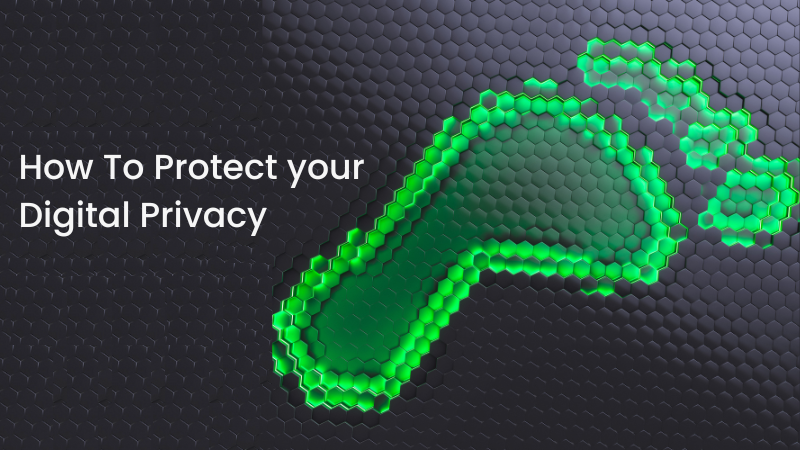Digital privacy has become increasingly important in our interconnected world, where our data is constantly being collected, analyzed, and sold. With the rise of internet-enabled devices, online networking platforms and file sharing, our digital footprints have grown exponentially, and the need for privacy protection has become more urgent than ever. This article will discuss effective ways to protect digital privacy, including the use of encryption, two-factor authentication, and privacy-preserving tools.
1. Encryption
Encryption is a crucial tool for protecting digital privacy, as it ensures that data is only accessible to authorized parties. Encryption works by transforming plain text into cipher text using an encryption algorithm and a secret key. This cipher text can only be deciphered with the corresponding secret key, which is known only to the authorized recipient.
When uploading and downloading sensitive information online, it’s important to encrypt data to protect your digital privacy. In the example of secure file sharing, most programs, like TitanFile, automatically encrypt your data the moment it’s uploaded so that no manual effort is required.
2. Two-Factor Authentication
Two-factor authentication (2FA) is another effective way to protect digital privacy. 2FA requires users to provide two forms of identification when logging into an account, typically a strong password and a unique code that is sent to a mobile device. Strong passwords are the first line of defence against cyber threats. However, two-factor authentication is an additional layer of protection that can mean the difference between digital privacy and exploitation. In the event that a hacker obtains your password, they will not be able to log in without access to your secondary device (i.e. SMS/Phone).
Most applications such as online banking, communication platforms, and e-commerce strongly suggest users enable 2FA, as it has become the general standard best practice for protecting digital privacy and securing accounts.
3. Report Fraudulent and/or Suspicious Activities
The Office of the Privacy Commissioner of Canada recommends reporting email solicitations that are fraudulent, misleading or that you did not consent to receive. There are over 130 million spam emails sent every minute which means you’re likely to receive a suspicious email or two every day. These emails often carry malware and attempt to steal your personal information for exploitative reasons. Sometimes, they imitate people in your network or mimic well-known companies to trick users into believing it’s coming from the real source – unfortunately, it can be difficult for people to spot and they fall, victim.
If you receive email communications or pop-ups that may be suspicious, double-check the URL. Untrustworthy sites are not HTTPS (the ‘S’ stands for secure). Additionally, ensure the email address that you are receiving communications from matches the source; for example receiving an email from tom@titanfile.com vs tom@titanfiles.com. Fraudulent emails will usually have the smallest difference from authentic ones, and it’s up to you to tell the difference!
4. Deny Cookies and Clear your Cache
The pinnacle of digital privacy involves your cookies and cache. Whenever you enter a website, you’re often bombarded with a textbox that asks you to accept cookies or manage them. Similarly to terms and conditions, people don’t care to read them and accept the cookies.
However, these cookies allow the website to track your behaviour and store information about preferences, login information, and browsing history. If you’ve ever searched for a new tech tool and then received targeted ads about that same product on a different application, surprise! It was the cookies. To prevent websites from storing this information, it’s necessary to deny cookies when browsing the web.
Clearing your cache is another important behaviour in protecting digital privacy. By doing so, you can delete stored login information, cookies, and other data that could be used to track your online activity. Another plus is the improved browser performance you will experience since clearing your cache frees up memory and reduces the amount of data the browser needs to process when loading websites.
5. Disable Data Tracking
DNT is your best friend. Unfortunately, your friendship request can get denied. “Do Not Track” (DNT) is a web browser setting that informs websites and online services that the user does not want their browsing activity to be tracked or monitored. When you enable the DNT setting in your browser, it sends a signal to websites and other online services indicating that you do not want their behaviour to be tracked across different websites and online services.
Disabling data tracking helps protect users’ privacy and limit the collection of their personal information. However, it is simply a request and not all websites and online services respect the DNT signal – some may continue to track user activity regardless of the setting.
Conclusion
In the digital age, online privacy should be a priority. With the increase of cyber threats online, it’s important to protect your personal information from exploitation and manipulation. By encrypting data, securing accounts with 2FA, reporting fraudulent activity, disabling data tracking, denying cookies and clearing your cache, you’re taking a step in the right direction for protecting your digital privacy.

